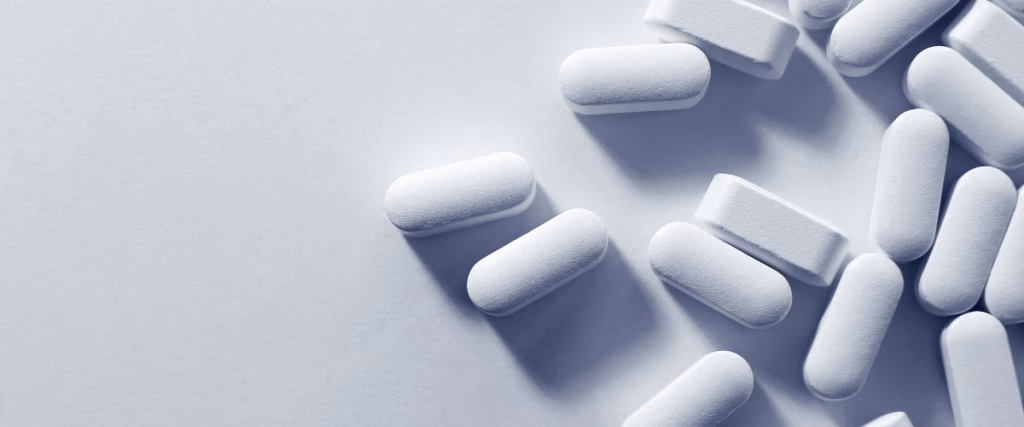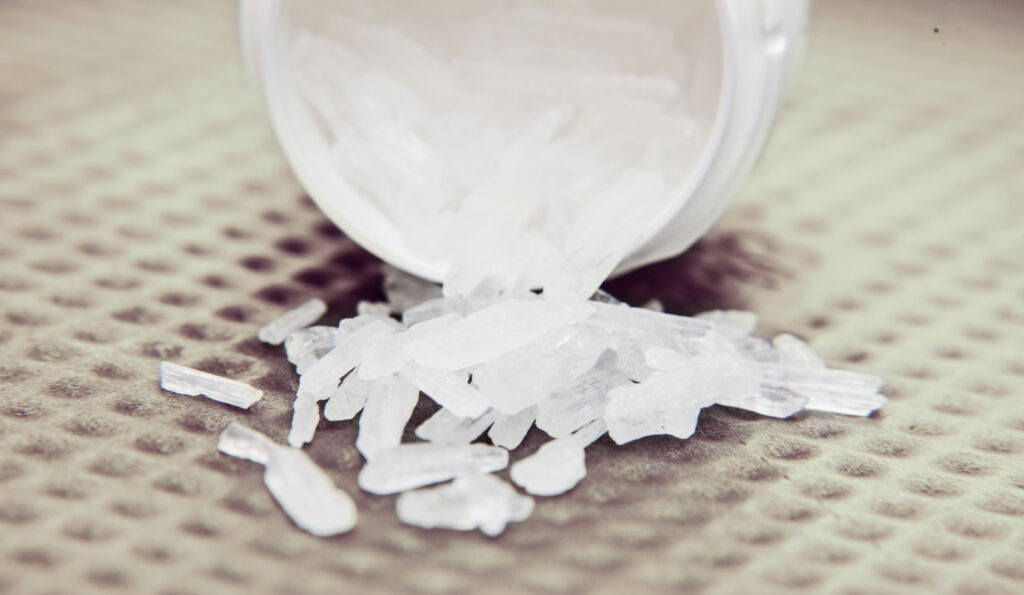Drug detox is a phrase that many of us have heard, without fully understanding what it’s comprised of.
For someone struggling with addiction, detox can be the turning point between spiralling further and finally starting to break free.
This page gives you a general overview of what professional detox involves and how it can function as your key that unlocks the door to a healthier, brighter tomorrow.
What is drug detox?
Detoxing is the process of clearing harmful substances from the body, and in addiction treatment, it refers specifically to removing toxins from someone who’s become dependent on drugs or alcohol. The overall goal is to reduce the physical harm caused by substance use.
For many, detox marks the first real step towards recovery. It’s the point where physical dependence is broken and a sober future begins to take shape. But it’s not always straightforward as it sounds..
Depending on the substance and how long it’s been used, withdrawal symptoms can range from unpleasant to dangerous. That’s why detox is safest when done with professional support, which consists of trained staff that can:
- Manage withdrawal symptoms
- Administer helpful medications
- Keep an eye on your health and any emerging issues
- Step in if complications arise
It’s also important to remember that detox isn’t a cure for addiction. It gets the substance out of your system, but it doesn’t deal with the deeper emotional or psychological reasons you were using in the first place.
Think of detox as laying the groundwork, a solid base to build the rest of your recovery on.
Whether you’re dealing with opioids, stimulants, depressants or prescription meds, a properly managed detox gives you the safest and strongest possible start. It clears the way for therapy, long-term support, and real, lasting change.
Who needs drug detox?
At this point, we know detox is. We know what the aim is. But who is this actually for? Addiction can make it hard to work out when you need help, but below, we cover some situations where detox should be considered.
Detox is for anyone with physical dependence
Drug detox is recommended when someone becomes physically dependent on a substance, meaning when they stop or even cut back, they experience withdrawal symptoms.
It doesn’t have to look dramatic. You might not be collapsing at work or losing relationships. But if your body reacts strongly when the drug leaves your system, that’s dependence.
Detox helps clear the substance from your body safely, easing that transition so you’re not facing the worst of it alone.
You don’t have to ‘hit rock bottom’
There’s a damaging belief out there that you only deserve help once your life is in ruins. But the truth is, waiting until everything falls apart only makes recovery harder. You don’t need to lose your job, end up in the hospital, or push everyone away to qualify for detox.
If you’re questioning whether drugs are taking over, even quietly in the background, that’s enough reason to check in. Early intervention saves a lot of pain later on.
It’s not just about daily use
People often think detox is only for those using every single day, but that’s not always the case.
Even people who binge only on weekends, or misuse prescription meds occasionally, can build up enough tolerance and physical dependence to need detox.
If using has become a habit that’s hard to break, if it feels necessary to get through the day or unwind, or if stopping leaves you feeling ill, detox can help.
High-functioning users still need support
One of the biggest challenges is recognising when someone needs detox if they’re still functioning ‘well enough.’ They might still show up to work, keep the house clean, or meet deadlines, but that doesn’t mean the addiction isn’t growing behind the scenes. It often starts quietly, then gradually spreads into more and more areas of life. By the time it becomes obvious, the damage is usually deeper.
That’s why catching it early and acting 5rrds\ matters.
What happens during detox?
Entering into detox without any prior knowledge may feel intimidating. We understand that you may have some apprehensions about what it involves.
Your detox plan will be unique to you, but there are some similarities in the general structure of treatment and understanding these may help ease some of the uncertainty.
A general drug detox timeline
The exact detox timeline will depend on the type of drug, how long you’ve been using and your individual health.
Your treatment providers will deeply understand a phased process to help you manage withdrawal symptoms. A timeline may consist of:
- First 24-72 hours: This is often the most intense period, where withdrawal symptoms peak. Your body is reacting to the absence of the substance, and symptoms may include nausea, tremors, anxiety, or cravings.
- Days 3–7: Withdrawal symptoms start to level out, although some (like insomnia or mood swings) may persist. Medical teams are thoroughly trained to monitor for complications during this period.
- Week 2 onwards: Physical symptoms may have generally subsided, but psychological withdrawal can persist, or even intensify. This is what makes the introduction of expert therapy so integral to your well-being moving forward. The first hurdle is cleared, yet the momentum must be sustained and supported.
Medical care and support
Throughout the drug detox process, medical support should always be on hand in case of any serious knock-on effects.
Your body and mind will likely be facing considerable strain in newfound sobriety.
Detox experts and trained professionals can:
- Provide medication to ease symptoms (e.g., for nausea, anxiety or cravings)
- Monitor your vital signs to keep you safe
- Offer emotional support and reassurance
- Prevent medical complications such as seizures or dehydration
You can be treated in an inpatient clinic, outpatient care, or a hospital setting, depending on the severity of your symptoms.
Your treatment providers will understand the best course of action to keep you supported through detox.
Common withdrawal symptoms by drug type
Withdrawal symptoms can present differently depending on the substance involved.
Here are some of the most common withdrawal symptoms, grouped by drug type:
- Opioids (e.g., heroin, prescription painkillers): Muscle aches, sweating, yawning, diarrhoea, intense cravings
- Stimulants (e.g., cocaine, meth): Fatigue, depression, agitation, sleep disturbance.
- Benzodiazepines (e.g., Valium, Xanax): Anxiety, insomnia, tremors, seizures (can be severe, so medical detox is strongly recommended)
- Cannabis: Irritability, reduced appetite, mood swings, sleep problems
- Alcohol: Shaking, nausea, sweating, hallucinations, seizures (can be life-threatening)
Treatment providers will be thoroughly trained on how to manage the myriad symptoms involved with the substance your body has grown to depend upon.
Is it recommended to detox at home?
There are people who manage to stop using drugs without medical support, but these cases are few and far between.
It usually only works when someone has a mild level of dependence, no previous relapses, no underlying mental health conditions, and a genuinely stable support system at home. Even then, the risk of slipping back is high.
The early stages of a home detox are often where things fall apart. Not because the person doesn’t want to recover, but because the symptoms are simply too much.
With certain drugs, the only way to stop the discomfort is to take more of the substance. That’s where relapse happens, and the cycle continues. You try to stop, you hit a wall, and you go back
In an inpatient setting, this cycle is interrupted. You’re not strapped to a hospital bed or forced to stay, but you are removed from the environment that enables the pattern to repeat itself.
It’s not easy, and it’s definitely not always comfortable, but everything around you is designed to help you push through.
Home detox vs Inpatient detox – a comparison
When you’re overwhelmed, reading endless blocks of information rarely helps. Sometimes, you just need to see the facts laid out clearly, step by step, side by side.
That’s exactly what we’ve done here. Below, we walk you through the key stages of the detox process and show how each one looks depending on whether you’re at home or in a rehab setting.
1. Acknowledgement and decision to detox
|
Stage |
Home detox |
Inpatient detox |
|
You realise it’s time to stop. |
You might come to this decision alone or with encouragement from loved ones. It’s up to you to seek out advice or next steps. |
Often starts with a conversation with an addiction specialist. You’re supported in making the decision and guided on what happens next. |
2. Initial assessment and preparation
|
Stage |
Home detox |
Inpatient detox |
|
Your situation is reviewed to check what kind of detox you need. |
If done at all, this might be a basic online or phone assessment. It’s easy to overlook key medical risks. |
You receive a full medical and psychological assessment. Detox is tailored to your substance use, health history, and emotional needs. |
3. Managing withdrawal symptoms
|
Stage |
Home detox |
Inpatient detox |
|
This is when physical and mental symptoms hit. |
You rely on willpower, household support, and possibly a helpline. Severe symptoms like seizures or hallucinations can be dangerous without help. |
You’re monitored closely by trained staff. Medication and comfort measures are provided if symptoms escalate. You’re never left alone to suffer. |
4. Monitoring and adjusting the detox plan
|
Stage |
Home detox |
Inpatient detox |
|
Your needs may change mid-detox. |
Adjustments are made by you, based on how you feel. This can lead to confusion, underestimating symptoms, or stopping altogether. |
Your care team adapts the plan daily, responding to your body and mind in real time. You’re stabilised throughout the process. |
5. Emotional support and encouragement
|
Stage |
Home detox |
Inpatient detox |
|
Detox is mentally tough. Support makes a difference. |
You might speak to a friend or join a forum, but emotional support is inconsistent. |
You’re surrounded by compassionate staff, counsellors, and peers. There’s someone to talk to whenever you need it. |
6. Transition into recovery
|
Stage |
Home detox |
Inpatient detox |
|
What happens after detox? |
You may not have a plan, and it’s easy to slip back into old habits without structure. |
Therapy sessions, relapse prevention, and a full recovery programme. |
If you’re thinking about detox, clarity is key. Seeing it laid out like this might help you weigh up what kind of support feels right for you and what will truly give you the best chance at a fresh start.
What happens after detox?
Getting through detox is a huge step, but it’s not the end of the road, rather, it’s more like the beginning. Once the substance is out of your system, that’s when the real work starts. It doesn’t untangle the thoughts, habits, triggers or emotional struggles that led to the addiction in the first place.
This is where therapy and aftercare step in. Therapy helps you understand why you used, how to manage cravings, and what to do when life inevitably throws challenges your way. Aftercare keeps you grounded once you leave treatment through ongoing support or just knowing there’s someone to call if things feel shaky.
Unfortunately, none of that exists in a home detox. You might manage to white-knuckle your way through the withdrawals, but without support afterwards, the wheels come off. It’s like stripping a car down to the frame and expecting it to drive. The structure’s there, but there’s nothing helping it move forward.
In an inpatient setting, therapy and aftercare are built in.
Ready to take the next step?
Whether you’re struggling with substance use yourself or worried about someone close to you, the most important thing is knowing that you are not alone and support is out there.
Rehab Guide is here to extend a hand in your time of need. We deeply understand the complexities of addiction and give free, confidential advice on drug rehab centres across the country.
The journey of a thousand miles begins with a single step. Take that first step with us and learn the direction towards the healthy, substance-free life that you deserve.


